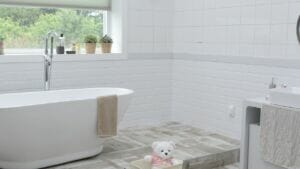Replacing a residential roof is a pivotal project that homeowners inevitably encounter over the lifespan of their property. Identifying when it’s time for its replacement is crucial for safeguarding your home’s structural integrity. Signs such as cracked or missing shingles, ceiling water stains, or light filtering through the attic signal that your roof may no longer adequately shield your home from the elements. Addressing these indicators promptly can prevent further damage and save significant costs in the long term.
Additionally, for those considering enhancements like a skylight roof, ensuring the underlying structure is sound is essential before installation to maintain integrity and performance. This article provides essential guidance to navigate these decisions effectively.
Choosing the Right Materials
Selecting the appropriate material is a decision influenced by various factors, including climate, budget, and aesthetic preferences. Traditional asphalt shingles are popular for their affordability and durability in most climates. Alternatively, metal roofs offer longevity and energy efficiency, making them a sustainable choice. Tile materials provide a distinctive look and excellent durability, albeit at a higher initial cost. Consulting with professionals like Paradise roofing can help you weigh these factors and choose the best option to suit your home’s needs and long-term goals.
Hiring a Professional Roofing Contractor
Finding a reputable contractor is essential to ensuring a successful replacement project. Search for those who are licensed, insured, and have a proven track record of quality workmanship. Ask for references and review online testimonials to gauge customer satisfaction. Getting multiple estimates allows you to compare prices and services, enabling you to make an informed selection that fits your budget and needs. A reputable contractor will furnish a comprehensive contract detailing the project’s scope, materials, and timeline. This clarity helps prevent misunderstandings and ensures transparency throughout the process.
Understanding the Roof Replacement Process
Understanding the process helps homeowners prepare for what to expect during construction. The process usually begins with a thorough assessment of your current roof to assess its condition and uncover any underlying issues, such as rot or structural damage. After removing the old roof, the contractor installs new roofing materials, including correct ventilation and insulation, to improve energy efficiency and indoor comfort.
Benefits of Timely Replacement
Investing in a new roofing system offers various benefits beyond enhancing your home’s curb appeal. Improved insulation reduces energy costs by maintaining comfortable indoor temperatures year-round. It also increases property value and enhances resale potential, making it a worthwhile investment for homeowners planning to sell in the future. Additionally, replacing an aging roof prevents costly interior damage caused by leaks or structural deterioration. By addressing these issues proactively, homeowners can avoid more extensive repairs and enjoy a safer, more comfortable living environment.
Maintaining Your New Roof
Once your roof repair is finished, regular upkeep is required to extend its lifespan and enhance performance. Schedule annual inspections to assess its condition and identify potential issues early on. Promptly address minor repairs, such as replacing damaged shingles or fixing loose flashing, to prevent water infiltration and structural damage. Keeping gutters clean and debris-free enables adequate drainage and prevents water from backing up under the rooftop. For homeowners with a skylight roof, regular maintenance is crucial to ensure the seals around the skylights remain intact and functional, maintaining both energy efficiency and interior comfort.
Replacing your residential roof is a significant investment in your home’s future. By recognizing signs of wear, selecting the right materials, hiring a qualified contractor, understanding the process, and maintaining your new roofing system, you can ensure years of protection and peace of mind. Take proactive steps to safeguard your home against the elements and enjoy the benefits of a well-maintained roof for years.




